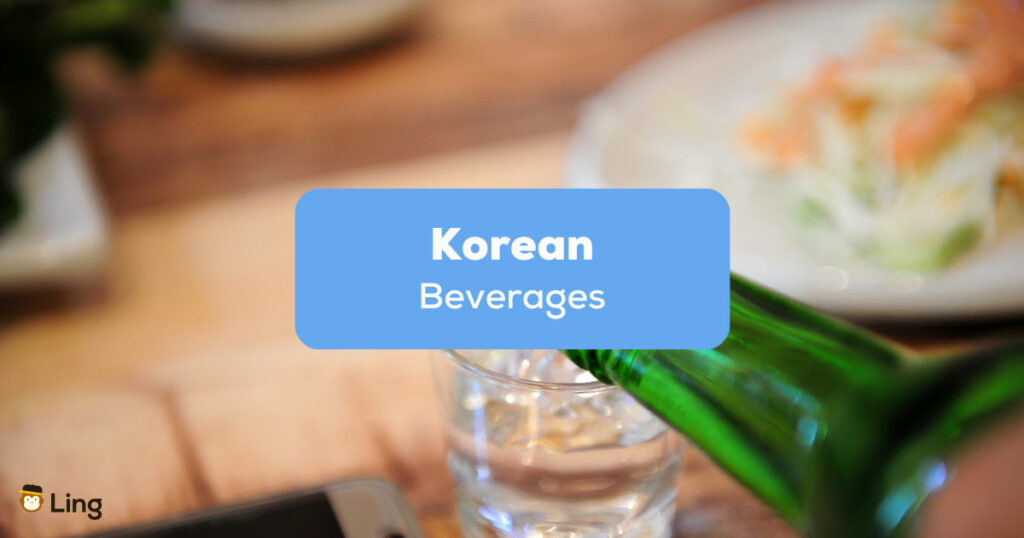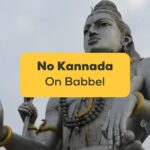Craving for a refreshing beverage? Quench your thirst with these famous Korean beverages –음료수 eumryosu like Soju, Banana Milk, and Milkis. Ready to learn more? Keep reading below!
It’s no secret that Korean cuisine offers a lot of mouthwatering food popular not just in South Korea but also worldwide. But aside from their food, they also have a fantastic variety of beverages ranging from non-alcoholic beverages and soft drinks to alcoholic drinks.
Today, we will learn about different Korean beverages that the locals and Korean culture enthusiasts are well-loved. This list might be long, but it will be worth reading.
What Are The Most Popular Korean Drinks?
In most of the K-dramas, whether it’s a historical K-drama or modern, we mostly see the characters drinking, which is a big part of their culture. It seems like drinks are an essential part of their lives. They have drinks perfect for different situations such as celebrations, tiredness, loneliness, and more. This is what makes us crave these drinks. Since it’s an integral part of their culture, why don’t we learn more about them?
Check out this extensive list of popular Korean drinks (alcoholic or not) and learn more about their history and drinking culture!
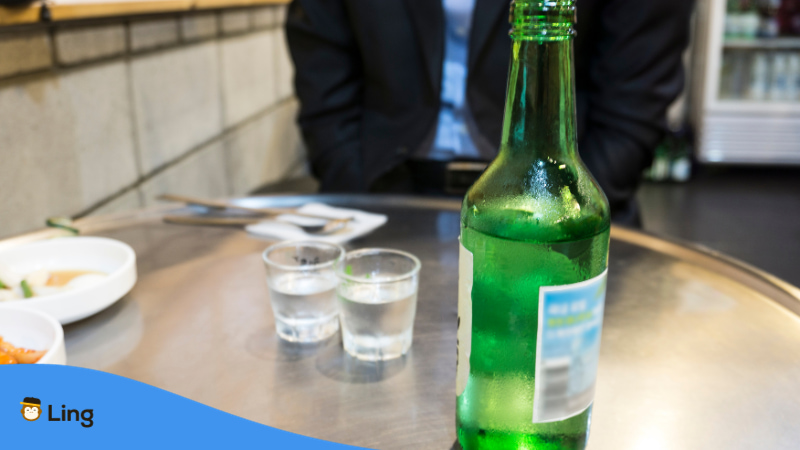
1. Soju (소주) – Korean Distilled Beverage
When it comes to Korean alcoholic drinks, there’s one drink that will always come first into our minds: Soju. From K-dramas, online ads, and print ads, Soju is definitely the leading Korean alcoholic drink loved not just by Koreans but also by people worldwide.
It is thought to have first appeared when the Mongols taught the Koreans how to distill alcohol in the 13th century. Soju is made from fermented rice, although it can also be made from wheat, barley, sweet potatoes, or tapioca.
If ever you want to try Soju, Chamisul (참이슬) and Chum Churum (처음 처럼) are the two major soju brands that dominate the Seoul market.
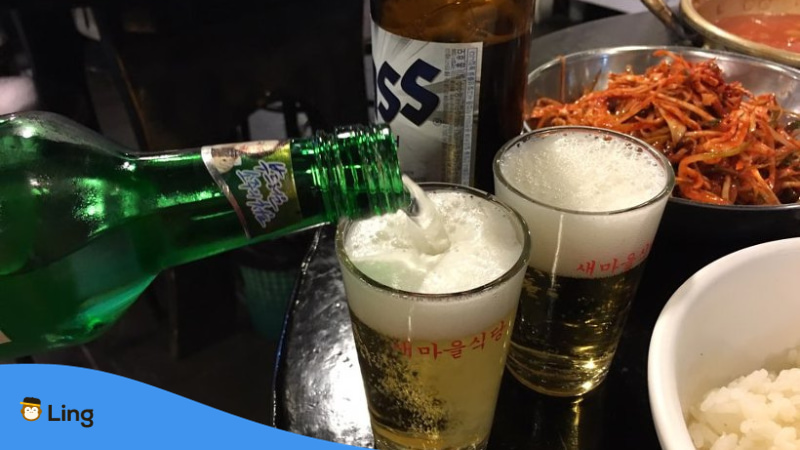
2. Somaek (소맥) – Cocktail Made Of Soju And Beer
Another type of Korean drink that we usually see in K-dramas is the Somaek (소맥). It is a basic Korean cocktail made with beer and soju, a popular rice spirit from Korea. If you have watched the K-drama, My Roommate is a Gumiho; this is what Lee Dam drank after she broke up with Woo-yeo.
The proportions of the beverages might vary, but three parts soju to seven parts lager is a good starting point. Somaek can be made in various ways, but the most common is to pour beer first, followed by a shot of soju. This is also best partnered with Korean fried chicken, like how Koreans enjoy it.
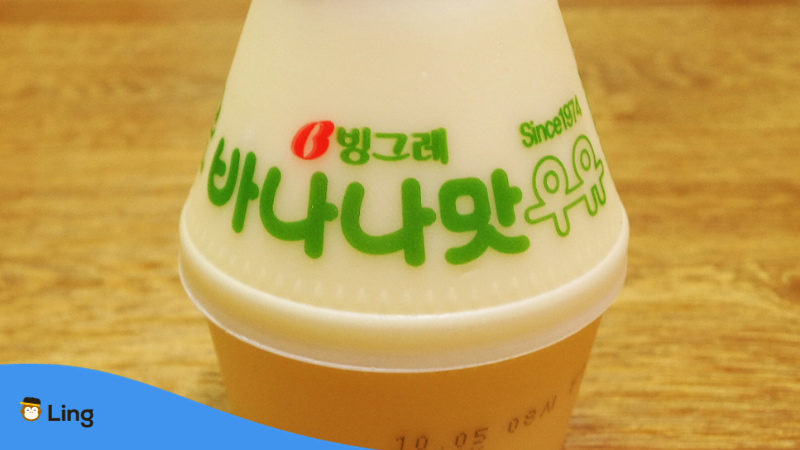
3. Banana uyu (바나나 우유) – Banana Milk
Remember when Baek Yi Jin surprised Na Hee-do while training at her school? This is the drink that Yi Jin gave to Na Hee-do. This simple, sugary, and addictive Korean drink makes up the childhood memories of many Koreans. It’s no surprise that nearly a million bottles of Banana milk are sold every day because of its popularity, added to the fact that it’s endorsed in K-dramas.
The government intended to encourage South Koreans to drink more milk for their health. Therefore banana-flavored milk became popular. Since its launch in 1974, when bananas were still considered a luxury item, this drink has been a national favorite. The most popular brand of Banana milk is Binggrae.
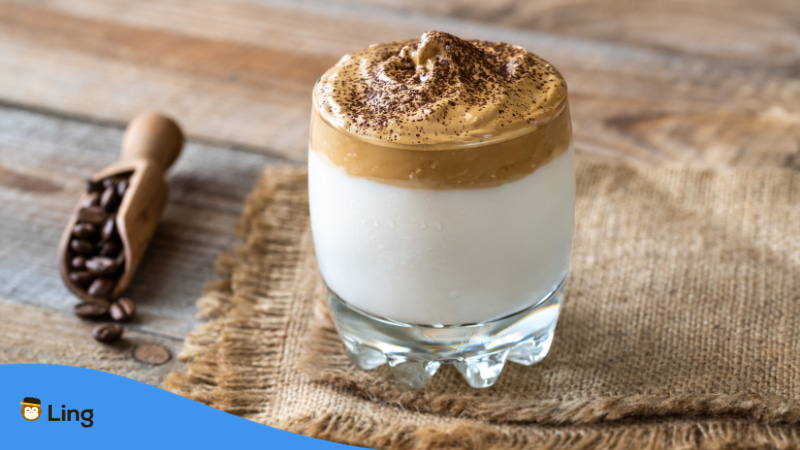
4. Dalgona Keopi (달고나 커피) – Dalgona Coffee
Remember when the pandemic hit and made the whole world stop in the year 2020? Dalgona Coffee rose to popularity, and almost everyone joined the trend and made their version in their home. This trendy Korean drink is perfect for enjoying at home because it is easy to make, delicious, and served cold.
The word dalgona comes from traditional Korean street food that tastes similar to honeycomb toffee. Dalgona is created in a similar style to whipped coffee; hence it was given that name by a TV personality.
Dalgona coffee is essentially frothy whipped coffee made of instant coffee, sugar, hot water, and milk. If you want to do this at home, you’ll need a mixing bowl. Combine the coffee, sugar, and hot water and whisk until the mixture is creamy, velvety, and firm. This whipped coffee is then dolloped upon cold or warm milk of your choosing. You can also watch TikTok or YouTube video tutorials.
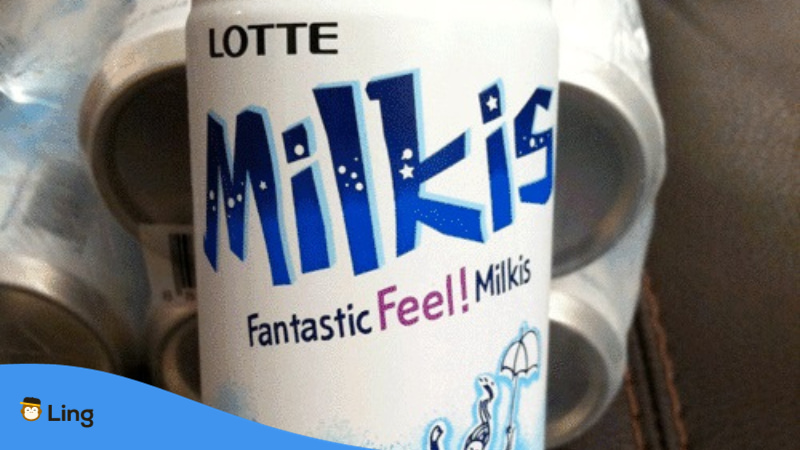
5. Milkiseu (밀키스) – Milkis
Milkis, often known as milk and yogurt soda, is one of the famous and well-liked Korean soft drinks. Lotte Chilsung, a South Korean beverage manufacturer, makes it. Its tagline says, “New feeling of soda beverage.” It blends several of the basic constituents of classic carbonated beverages, such as sugar and carbonated water, with milk to create a creamy taste. If you want a refreshing drink, Milkis is one to consider.

6. Maekkol (맥콜) – McCol
Who’s up for another refreshing drink? If you’re in South Korea, you should never miss trying McCol. In Korea, it is the first carbonated barley drink. It has recently received a lot of interest from health-conscious circles since it includes a dietary fiber called β-glucan. But, it didn’t take long until it gained popularity in South Korea.
McCol is a Korean barley-flavored soft drink that Ilhwa Co produces. It has a particular flavor that sets it apart from other cola soft drinks, giving it a rich yet refreshing flavor. McCol is a Korean favorite because of its unusual sweet flavor and blends of carbonation and barley undertones.
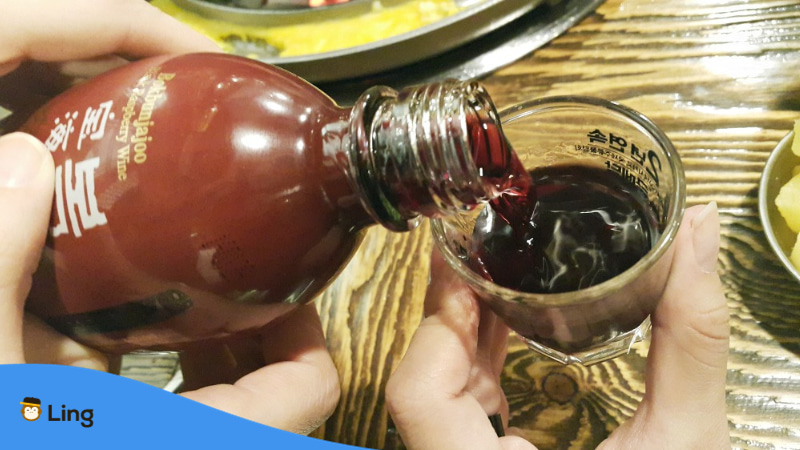
7. Bokbunja Ju (복분자주) – Korean Black Raspberry Wine
Bokbunjaju, commonly known as bokbunja wine, is a fruit wine prepared in Korea from wild and/or cultivated bokbunja (Korean black raspberry). Bokbunja-major Ju’s ingredient is the Bokbunja berry (a toothsome raspberry variant in Korea).
The health advantages of the bokbunja fruit are well recognized, so it should be no surprise that this delectable wine is also quite healthy. The wine’s trademark blood-red color and sweet berry flavor come from this local berry.
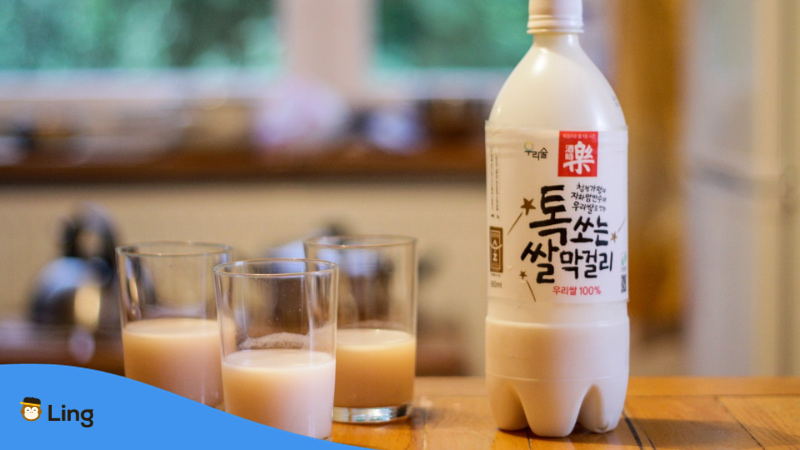
8. Makgeolli (막걸리)
Makgeolli, which goes back to the 10th century, is the oldest Korean alcoholic drink. It was popular among farmers and the working class decades ago. That’s why it gained the name “farmer’s drink.” It’s often produced with rice fermented with nuruk 누룩 (a traditional Korean fermentation starter). The fermenting procedure results in a softly carbonated beverage with a milky appearance and a mildly sweet taste.
When you dine in South Korea, it is served from a kettle and poured into stainless steel bowls. Since it was considered a “farmer’s drink,” a bowl of it was supposed to be equivalent to a rice bowl. Makgeolli is currently available in bottles and sold in supermarkets, preserving the heritage and innovating it.
Makgeolli is also one of the most popular Korean drinks that have been featured in different Korean dramas. It was seen in Vicenzo, Rooftop Makgeolli, and My Roommate Is A Gumiho. It was the most popular Korean drink in the 1980s, but imports slowly overshadowed it.
But, it made a comeback. Makgeolli gained popularity in the previous decade when it was reintroduced as a fruit cocktail blended with Chilsung Cider. Many bars and pubs throughout South Korea serve this contemporary form of Makgeolli.

9. Maesil-ju (매실주)- Korean Plum Wine
Maesil-ju, commonly known as plum wine, plum liquor, or plum liqueur, is an alcoholic beverage made with maesil fruit (plums). It is made from maesil, preferably ripe hwangmae (yellow plums), which are fragrant, firm, and yellowish in hue. Winemakers will utilize ripe and firm yellow plums to prepare this drink (known as hwangmae in Korean). Green ones are less prevalent because they are usually tougher and less scented.
Plums are cleaned and dried on a tray in cold water for a day. Dried plums and soju are steeped for roughly 100 days in a sterilized glass or earthenware jug. The fruits are then sieved out of the plum wine, and sugar is added. The wine can be enjoyed right once, but aging it for three to six months will substantially enhance its flavor.

10. Kol-la (콜라) – Cola/Coke
This is not particularly from South Korea, but it’s also a popular drink among Koreans. Kol-la or Cola is enjoyed by all ages just like how people love it in different parts of the world. It is best partnered with almost every Korean street food or Korean food. Just recently, in South Korea, the Coca-Cola Company released its first label-free plastic bottles. The corporation removed the plastic label to improve recycling efficiency and conform to the industry’s non-label trend to safeguard the environment.
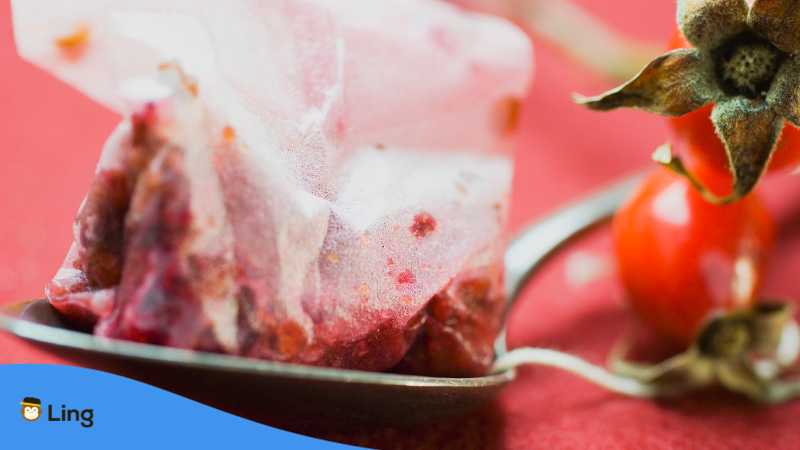
11. Omija Tea (오미자차) – Korean Five-Flavor Berry
Do you want a flavorful tea? Omija Tea doesn’t just offer one or two flavors. It offers five flavors which makes it one of the most popular Korean drinks. Omija-cha, or magnolia berry tea, is a traditional Korean tea brewed from dried magnolia berries. Sweetness, sourness, bitterness, saltiness, and pungency are the five flavors that make up the Omija. Boil dried magnolia berries in water over low heat and then add honey to make the tea.
This tea is ideal for when you feel a cold or flu coming on because it has a variety of therapeutic characteristics that help prevent colds. Omija tea may even help heal the liver over time, according to traditional Korean medicine!
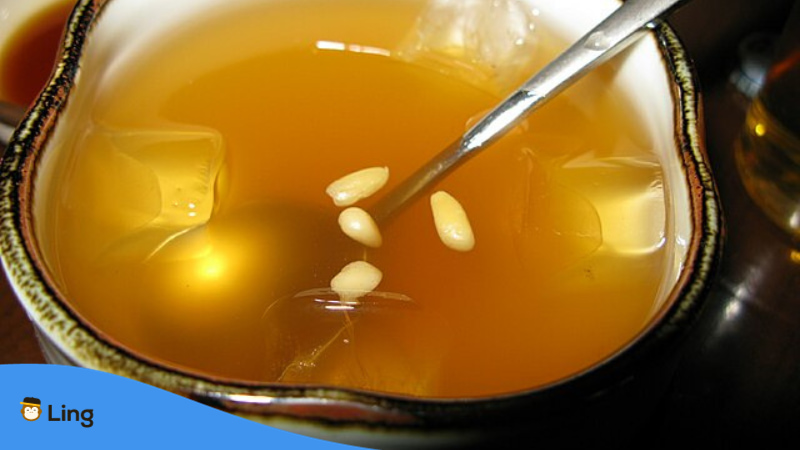
12. Maesilcha (매실차) Green Plum Tea
If you have experienced going to South Korea during the summer season, you’ll see enormous netting bags full of little green plums or yellow plums. Plum trees are well-known throughout East Asia for their blossom and fruit. The plums from this tree are an essential ingredient in making one of the traditional Korean drinks, the Korean plum wine.
Koreans will often ferment plums with sugar to make maesil syrup, a plum concentrate that may be stored and used as a refreshing summer beverage or a winter tea.
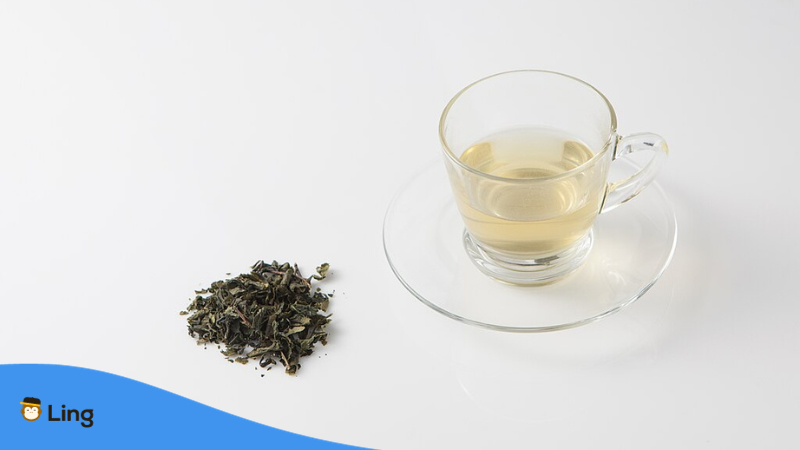
13. Nokcha (녹차) – Green Tea
Green tea or Nokcha has managed to get its place as one of the trendiest drinks today, and it’s one of the ultimate classic Korean beverages. It’s a delicious tea that can be consumed in various situations, like if you want a refreshing drink during summer, a warm drink during cold days, and if you want a new flavor for your cookie or cake.
Green tea has been around for centuries, and its applications appear to be endless. It’s also high in antioxidants, making it a favorite drink among health-conscious people. Instead of powder, Korean green tea is prepared from dried tea leaves. Today, almost everything has a green tea flavor – ice cream, cookies, and more.
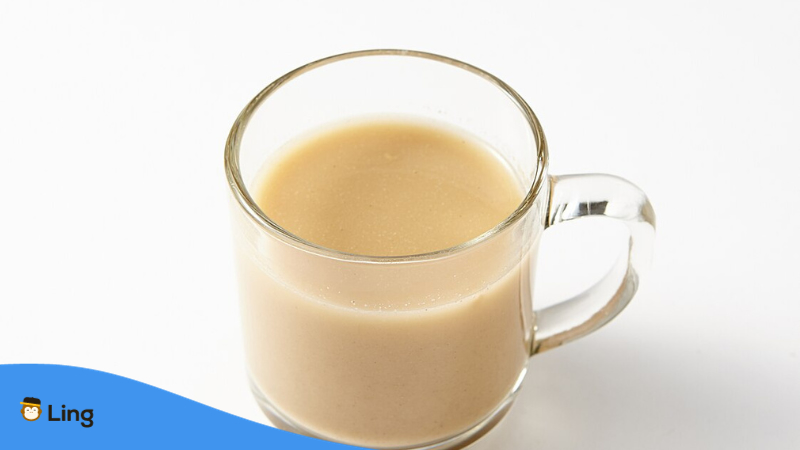
14. Misutgaru (미숫가루) – Ground Grains
Misutgaru is a beverage made from misu-garu (misu powder), a traditional Korean grain powder made up of 7–10 different grains. It is commonly used to satisfy thirst on hot summer days, as a quick, nutritious drink for breakfast, or as a healthy snack.
Misutgaru is a roasted grain powder shake sweetened with honey or sugar. This smoothie is an excellent diet food because it is high in protein and provides a healthy range of whole grains.

15. Sukchwihaesoeumnyo (숙취해소음료) – Dawn 808
With the drinking culture of Koreans, it’s not surprising that hang-over drinks are very famous. Dawn 808 is the first patented hangover drink in the world! Dr. Jong Hyun Nam devised the formula (portrait on the can). The flavor is evocative of hanyak (traditional Korean medicine), made from traditional herbs and roots.
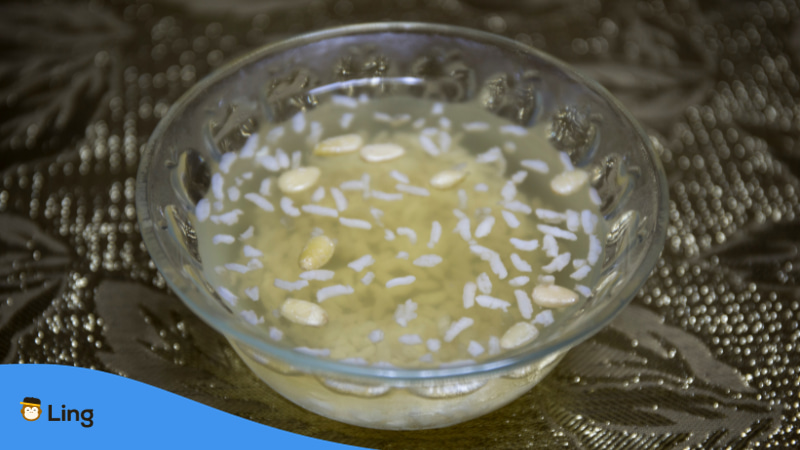
16. Sikhye (식혜) – Korean Sweet Rice Drink
Sikhye does not refer to Du-sik and Hye-jin in Hometown Cha-Cha-Cha. Sikhye is a non-alcoholic sweet drink created in South Korea with barley malt powder (the same grain used in beer and bread), sugar, rice, and, in certain cases, pine nuts. It’s a traditional Korean rice drink usually served as a dessert after a meal.
The drink has a particular flavor thanks to cooked rice and malt water. The drink is traditionally drunk at Korean festivals such as New Year’s Day and the Korean Harvest Festival. Sikhye is thought to aid digestion since it includes dietary fiber and antioxidants. Sikhye is such a rite of passage in Korea that it may even be found in bottles or cans at most Korean supermarkets and stores!
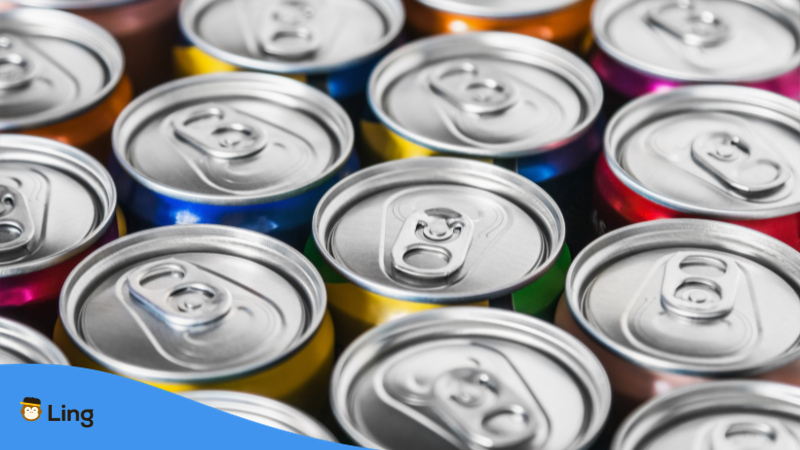
17. Bakkaseu (박카스) – Bacchus/Energy Drink
Are you a fan of the Red Bull Energy drink when you need an extra energy kick? Bacchus will do the same trick. Water, sugar, high fructose corn syrup, taurine (the Red Bull special ingredient), and other additives make up most of the formula. Bacchus was first introduced in 1963 by the pharmaceutical company Dong-A as a hangover cure. It is now sold as an energy supplement.
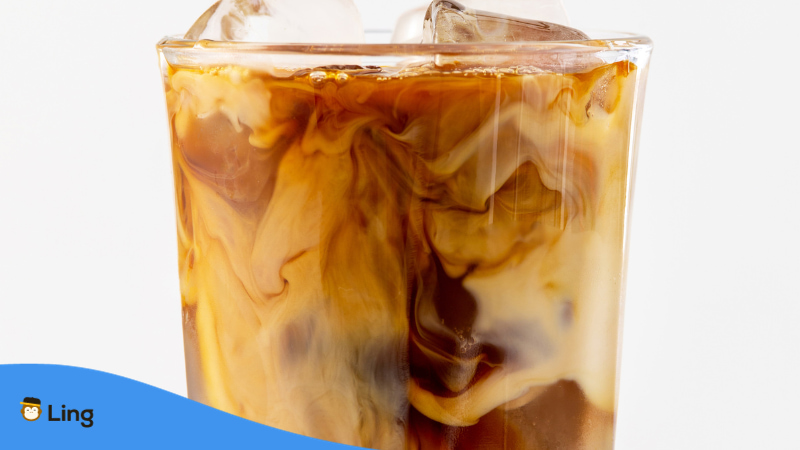
18. Keopi Uyu (커피 우유) – Coffee Milk
Are you having a long day, and you want extra energy? Coffee milk will never disappoint you. Coffee milk is coffee-infused milk. One non-alcoholic drink will satisfy you and make your day better. What’s more interesting is that it comes with cool and cute packaging to be easily carried around.
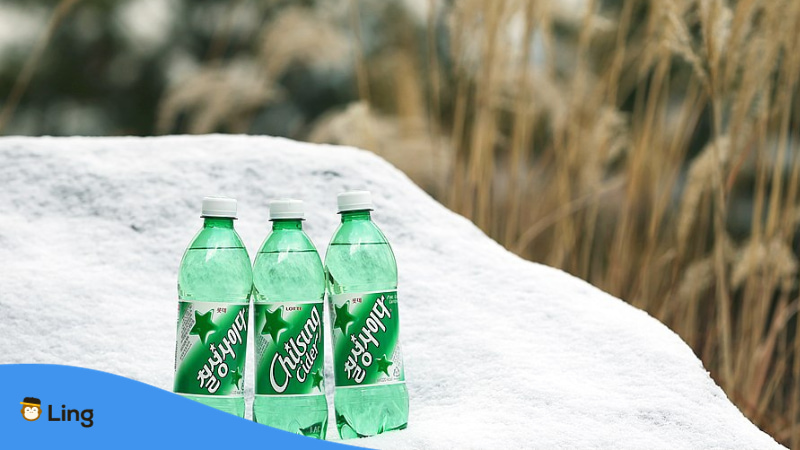
19. Rosdechilseongsaida (롯데칠성사이다) – Chilsung Cider
Do you want another refreshing soda? Chilsung Cider will do the magic. Chilsung Cider is Korea’s No. 1 original carbonated beverage with a lengthy history. It tastes like a lemon-lime soft drink that many Koreans consider a refreshing drink, especially after exercising. The trick to this popularity lies with its standards: Pure, Clear, and Caffeine-free.

20. Gukhwacha (국화차) – Chrysanthemum Tea
One of the traditional teas that Koreans love to enjoy is the Gukhwacha or Chrysanthemum Tea. It is a flower-based infusion beverage produced from the blooms of the Chrysanthemum morifolium or Chrysanthemum Indicum species, popular in East and Southeast Asia. It is made of dried flowers soaked in honey for several months before being brewed with hot water to make a light, somewhat sweet tea full of flower blossoms.
The Chrysanthemum flower also has a lot of health benefits. According to one study, Chemicals taken from chrysanthemum flowers may help reduce inflammation, have anti-obesity effects, aid in the treatment of high blood sugar, and prevent type 2 diabetes.

21. Yujacha (유자차) – Citron Tea
Yuja cha is a tea created from thinly sliced yuzu fruit preserved in honey, preserving the fruit and giving it the sweet flavor that distinguishes citron tea. The main ingredient of this tea is Yuzu, a lemon-like citrus fruit. To create citron tea, get some of this delectable yuzu honey and dissolve a few spoonfuls in hot water. Citron tea has been considered a cold and flu treatment for centuries.
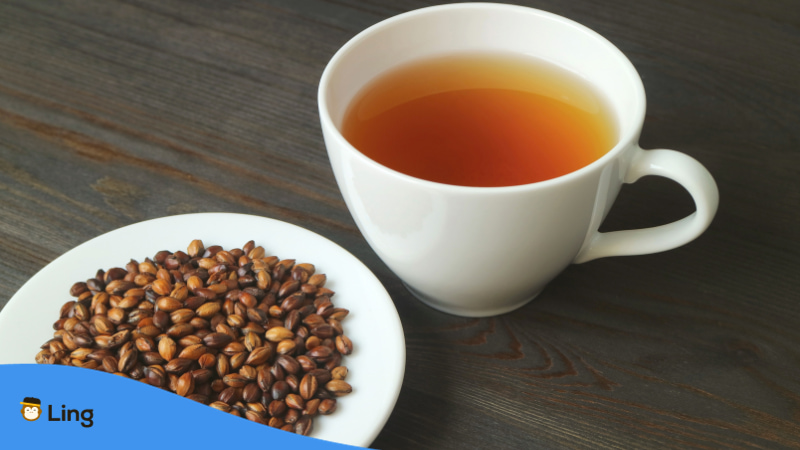
22. Boricha (보리차) – Roasted Barley Tea
Koreans offer a wide variety of teas that you can enjoy, whether hot or cold. One of them is the Boricha or the Roasted Barley Tea. Unlike several teas on this list made with syrups or honey, it may be produced with only a tea bag and some hot water. Barley tea is also caffeine-free, allowing it to be had at any time of day.
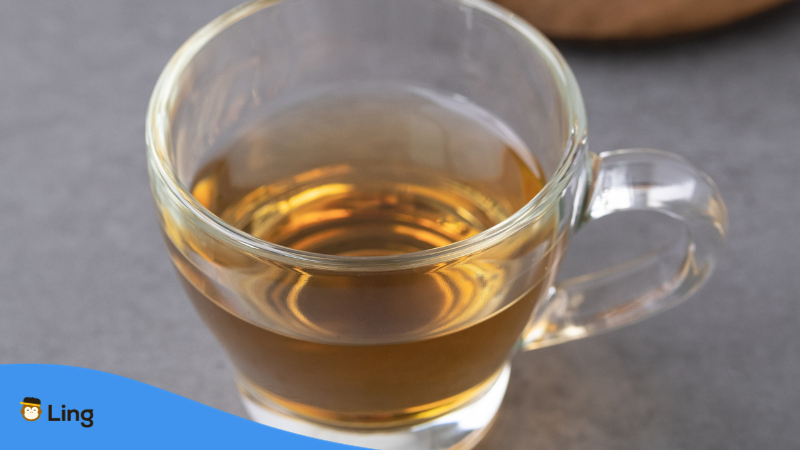
23. Oksusucha (옥수수차) – Corn Tea
If you visit South Korea in winter and you’re looking for a perfect drink, corn tea is worth considering. Corn tea, or Oksusu-cha, is a Korean tea prepared from corn. While oksusu-suyeom-cha, or corn silk tea, refers to tea produced using corn silk, oksusu-cha can also be made with corn kernels, corn silk, or a combination of the two. In the winter, the caffeine-free infusion of this drink is a popular hot beverage. Corn tea can also aid weight loss, so this drink is worth it.
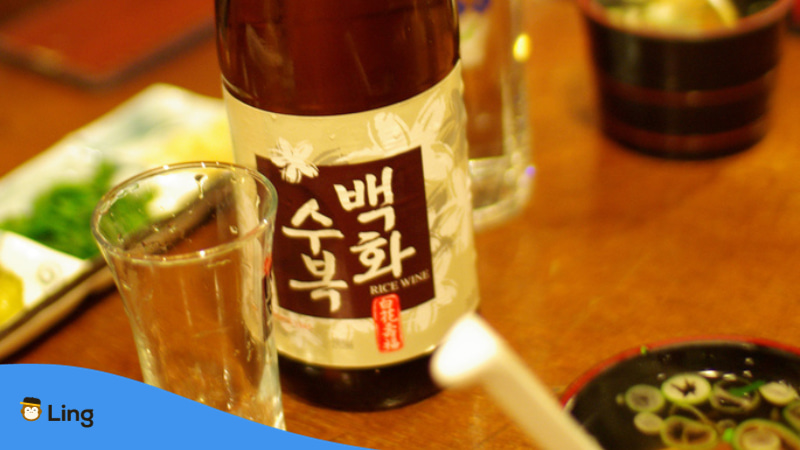
24. Cheongju (청주)
Let’s talk about another Korean rice wine that has been around for a long time. Cheongju is a rice wine manufactured in South Korea from fermented polished rice. After that, it’s filtered to create a clear, crisp drink with a subtle sweetness. Cheongju is a traditional royal beverage still served as a ceremonial or welcoming drink. It is way more expensive than Soju, but it’s worth it.
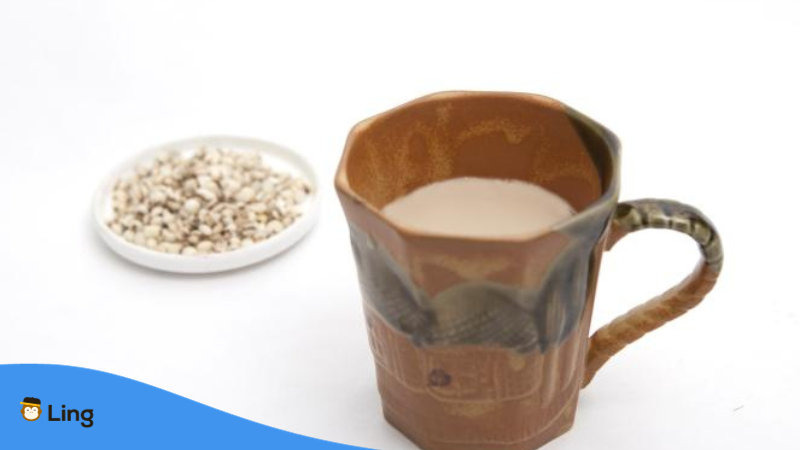
25. Yulmucha (율무차) – Job’s tears
Yulmu-cha is a roasted, powdered yulmu tea occasionally blended with nuts like walnuts. The star of yulmu is a little grain known as “Job’s tears,” which has a long and colorful history. In addition to being delicious, this grain was used to produce religious jewelry throughout Europe, earning its unusual moniker.
Many people argue if it’s a tea or a meal. Despite being a tea, yulmu contains significant nourishment due to its preparation. In South Korea, vending machines sell tea, normally served hot. It’s affordable, convenient, and most of all, delicious.
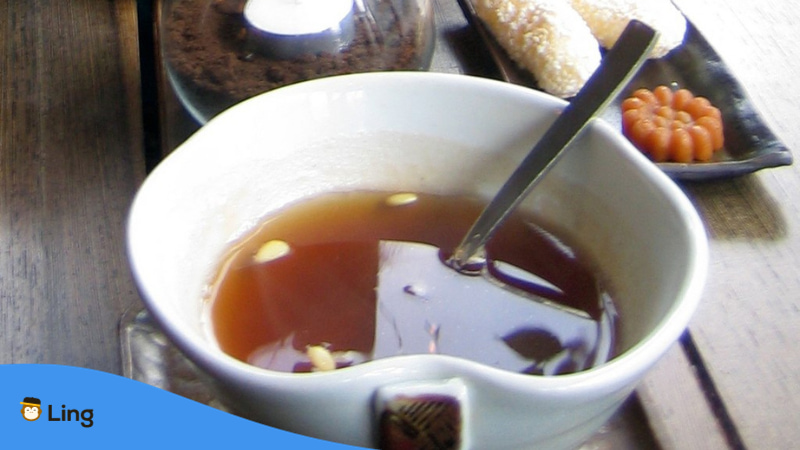
26. Sujeonggwa (수정과) – Korean Cinnamon Punch
Another Korean “dessert” drink, Sujjeongwa is a popular traditional drink that you must try. The drink’s foundation is simmering ginger, peppercorns, and cinnamon. Then, to give it a heartier, autumnal flavor, honey or brown sugar is added, along with dried persimmons that are reconstituted in the liquid.
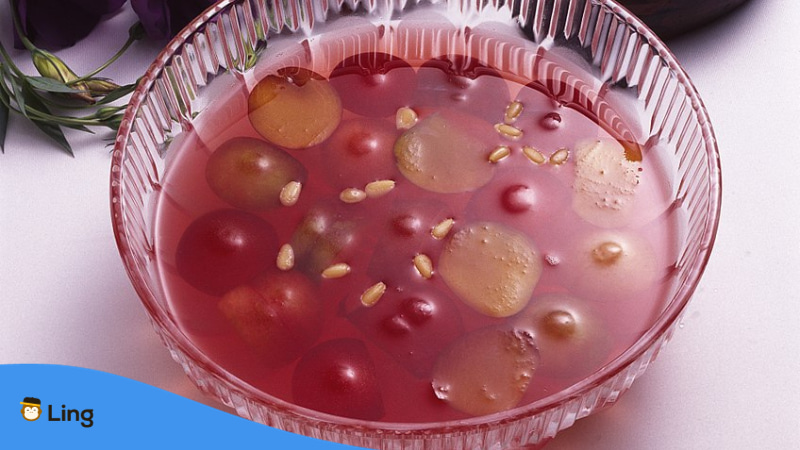
27. Hwachae (화채) – Korean Punch
Hwachae is a generic term for non-alcoholic punches created in Korea from various fruits and edible flowers soaked in honeyed water or honeyed magnolia berry juice.
Some Hwachae recipes now include fizzy beverages and fruit juices. Before serving, several restaurants top this dish with pine nuts. Subak-Hwachae is the most popular fruit punch, created of watermelon slices or scoops, bits of other fruits, ice, and honeyed watermelon juice.
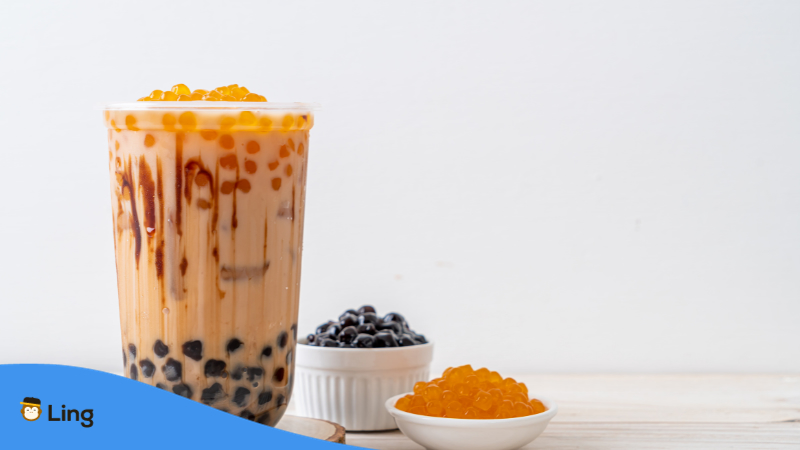
28. Milkeuti (밀크티) – Milk Tea
We cannot talk about Korean beverages without talking about milk tea. The milk tea was invented in Taiwan and swiftly spread throughout Asia, and Korea is no different. Milk tea brands imported from abroad are well-known among young Koreans. The top Korean milk tea brands are Gong Cha 공차, The Alley 더앨리, Cofioca 커피오카, Amasvin 아마스빈, and Happy Lemon 해피레몬.
Other Korean Beverages
General Korean Beverages
Milk (우유 u-yu)
Tea (차 Cha)
Coffee (커피 Keo-pi)
Alcoholic Drinks/ Beverages (주류 Juryu)
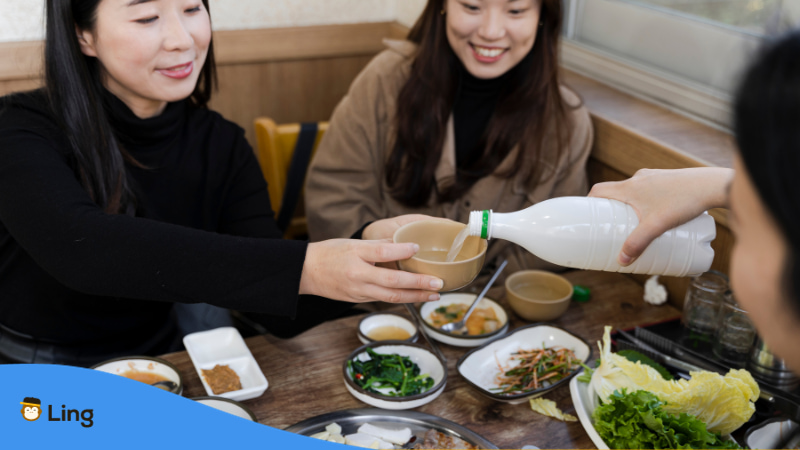
Korean Words And Phrases Related To Korean Beverages
Korean Sentences Related To Korean Beverages
Learn The Korean Language With The Ling App Now!
Drinks are more fun when you have company. Imagine having a drink in South Korea while talking with your friends, colleagues, and even people you have just met. So, why not learn Korean? You may start by learning the basic words and phrases and greetings then you can work your way up to different topics.
Luckily, the Ling app can give you an amazing language-learning experience to improve your language skills.
Cheers to a new opportunity to learn Korean. Grab your phone, download the app on the Play Store or App Store, or just go to the website. Learn Korean with the Ling app now!
